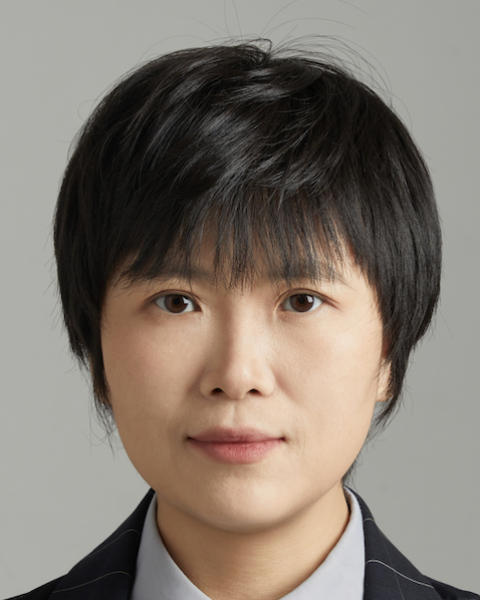PQA 03 - PQA 03 Gynecological Cancer, Pediatric Cancer, and Professional Development Poster Q&A
3591 - Phase II Study of Induction Immunotherapy Combined with Platinum-Base Doublet Chemotherapy Followed by Immunotherapy and Chemoradiotherapy in High-Risk Locally Advanced Cervical Cancer
Monday, September 30, 2024
8:00 AM - 9:00 AM ET
Location: Hall C
Screen: 8

Xiao-Fan Li, MD
Beijing, Beijing
Presenter(s)
J. You, Y. Yuan, X. Gu, J. Li, and X. F. Li; Key Laboratory of Carcinogenesis and Translational Research (Ministry of Education/Beijing), Department of Radiation Oncology, Peking University Cancer Hospital and Institute, Beijing, China
Purpose/Objective(s): High-risk locally advanced cervical cancer has a poor prognosis with high-risk of metastasis. This study aimed to investigate the efficacy of induction immunotherapy combined with platinum-base doublet chemotherapy followed by immunotherapy and chemoradiotherapy for high-risk locally advanced cervical cancer (LACC) patients. Materials/
Methods: The study is a single-arm, open-label and prospective phase II trial. Newly diagnosed cervical squamous cell carcinoma, adenocarcinoma, or adeno-squamous cell carcinoma of stage ?B, ?C1, ?C2, and IVA (2018 FIGO stage) with a tumor diameter >4cm were enrolled. Patients received two cycles of induction PD-1 inhibitor combined with platinum-base doublet chemotherapy (sintilimab 200mg combined with nab-paclitaxel 260mg/m2 and cisplatin 75mg/m2 every three weeks). After that, concurrent immunotherapy and chemoradiotherapy were conducted. Patients received definitive image-guided volumetric modulated arc therapy (VMAT) and image-guided intracavity brachytherapy, combined with chemo-immunotherapy (two cycles of sintilimab combined with nab-paclitaxel 220mg/m2 and cisplatin 60mg/m2 every three weeks). Sintilimab immunotherapy was conducted as a maintenance therapy for two years.
Results: Thirty patients were enrolled from July, 2022 to December, 2023. Median age was 55 years (29-64). 26(86.7%) were squamous carcinoma and 4(13.3%) were adenocarcinoma. 3 (10%) were stage IIIB, 15 (50%) were stage IIIC1, 9 (30%) were stage IIIC2 and 3 (10%) were stage IVA. All patients completed the induction and concurrent therapy, and currently receive immunotherapy maintenance therapy. All patients completed induction therapy, 27 patients (90.0%) completed concurrent immunotherapy and chemotherapy, and 29 patients (96.7%) completed radiotherapy. Three patients (10.0%) discontinued immunotherapy maintenance therapy.After induction treatment, twenty patients (66.7%) showed no tumor for pathological biopsy, and objective response rate (ORR) was 100%. 21 patients can be evaluated by march, 2024, and ORR were 100%.
Conclusion: Induction immunotherapy combined with platinum-base doublet chemotherapy followed by immunotherapy and chemoradiotherapy might be a novel approach for high-risk LACC, long-term effect needs longer follow-up.
Purpose/Objective(s): High-risk locally advanced cervical cancer has a poor prognosis with high-risk of metastasis. This study aimed to investigate the efficacy of induction immunotherapy combined with platinum-base doublet chemotherapy followed by immunotherapy and chemoradiotherapy for high-risk locally advanced cervical cancer (LACC) patients. Materials/
Methods: The study is a single-arm, open-label and prospective phase II trial. Newly diagnosed cervical squamous cell carcinoma, adenocarcinoma, or adeno-squamous cell carcinoma of stage ?B, ?C1, ?C2, and IVA (2018 FIGO stage) with a tumor diameter >4cm were enrolled. Patients received two cycles of induction PD-1 inhibitor combined with platinum-base doublet chemotherapy (sintilimab 200mg combined with nab-paclitaxel 260mg/m2 and cisplatin 75mg/m2 every three weeks). After that, concurrent immunotherapy and chemoradiotherapy were conducted. Patients received definitive image-guided volumetric modulated arc therapy (VMAT) and image-guided intracavity brachytherapy, combined with chemo-immunotherapy (two cycles of sintilimab combined with nab-paclitaxel 220mg/m2 and cisplatin 60mg/m2 every three weeks). Sintilimab immunotherapy was conducted as a maintenance therapy for two years.
Results: Thirty patients were enrolled from July, 2022 to December, 2023. Median age was 55 years (29-64). 26(86.7%) were squamous carcinoma and 4(13.3%) were adenocarcinoma. 3 (10%) were stage IIIB, 15 (50%) were stage IIIC1, 9 (30%) were stage IIIC2 and 3 (10%) were stage IVA. All patients completed the induction and concurrent therapy, and currently receive immunotherapy maintenance therapy. All patients completed induction therapy, 27 patients (90.0%) completed concurrent immunotherapy and chemotherapy, and 29 patients (96.7%) completed radiotherapy. Three patients (10.0%) discontinued immunotherapy maintenance therapy.After induction treatment, twenty patients (66.7%) showed no tumor for pathological biopsy, and objective response rate (ORR) was 100%. 21 patients can be evaluated by march, 2024, and ORR were 100%.
Conclusion: Induction immunotherapy combined with platinum-base doublet chemotherapy followed by immunotherapy and chemoradiotherapy might be a novel approach for high-risk LACC, long-term effect needs longer follow-up.
